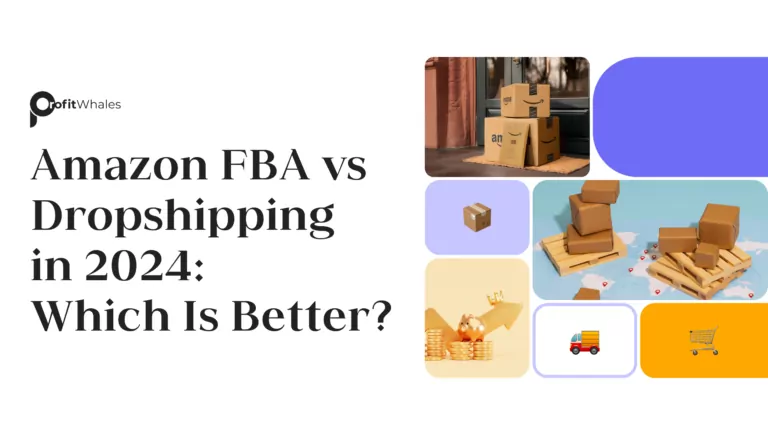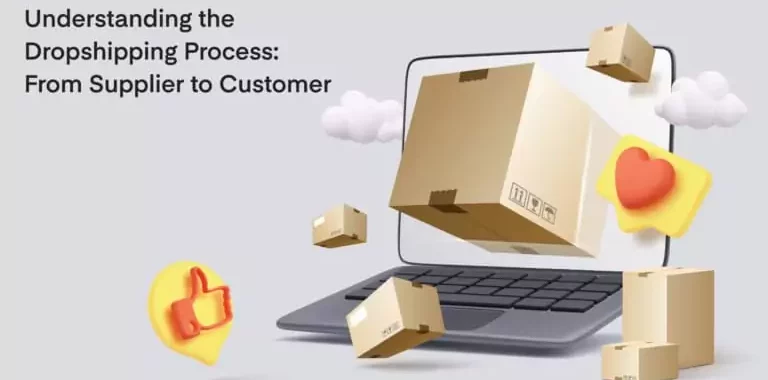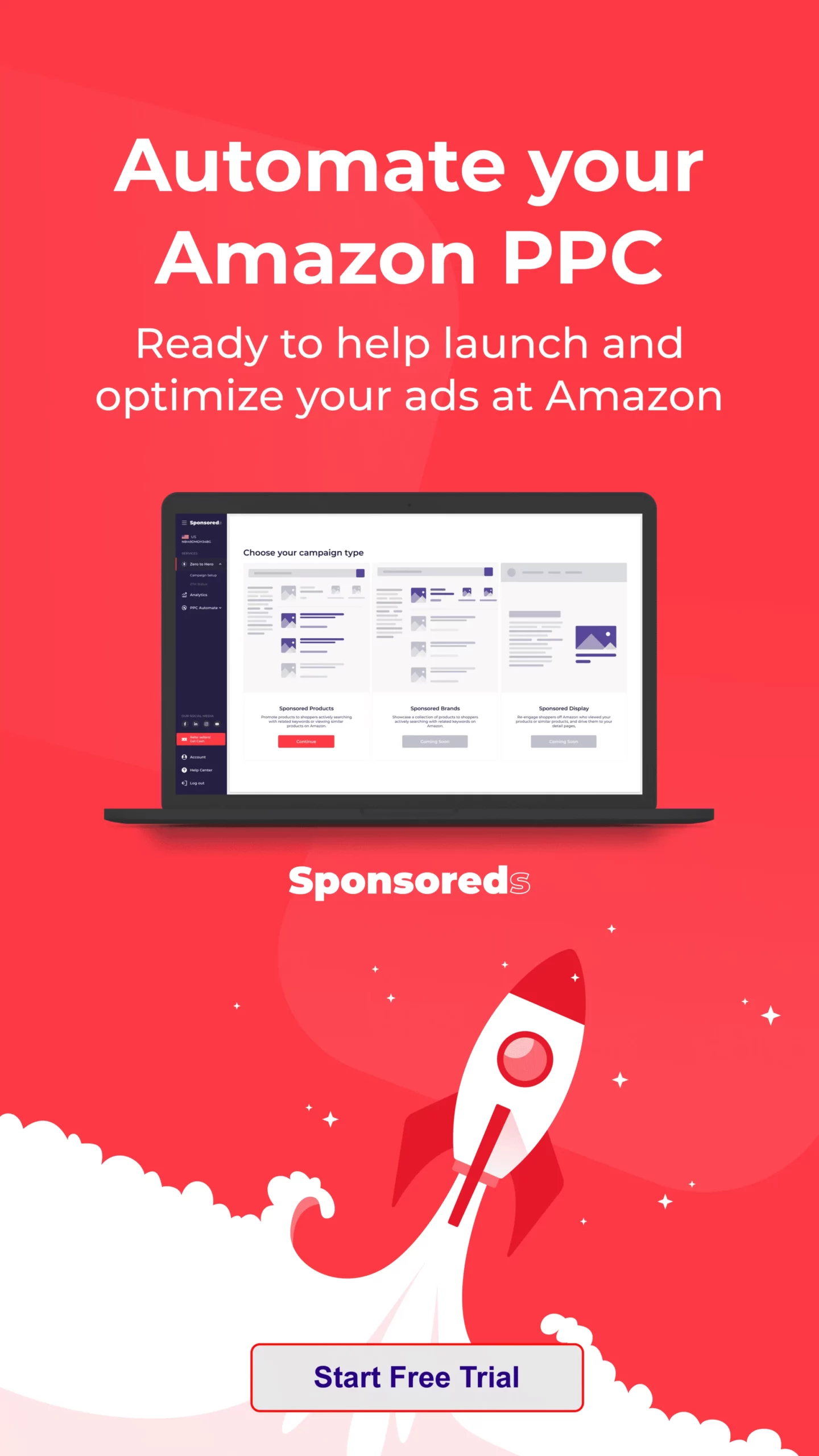Introduction
In the ever-evolving world of e-commerce, choosing a suitable business model is crucial for success. Two of the most popular models today are Amazon FBA (Fulfillment by Amazon) and dropshipping. Both offer distinct advantages and challenges, making it essential for entrepreneurs to understand their nuances and determine which model aligns best with their business goals and resources. This article will explore Amazon FBA vs. dropshipping in detail to help you make an informed decision.
Overview of E-commerce Business Models in 2024
E-commerce continues growing, with new trends and technologies shaping businesses’ operations. In 2024, the focus is on efficiency, customer satisfaction, and scalability. Amazon FBA and dropshipping are at the forefront, each offering unique benefits catering to different sellers and business strategies. Understanding these models helps businesses stay competitive and meet consumers’ increasing demands. Comparing Amazon FBA vs. dropshipping will provide insights into which model is better suited for different business needs.
Why Compare Amazon FBA and Dropshipping?
Comparing Amazon FBA and dropshipping helps potential e-commerce entrepreneurs understand which model might suit their needs better. Factors such as control over inventory, initial investment, profit margins, and shipping times play significant roles in deciding which path to follow. A straightforward comparison allows for informed decision-making, ultimately leading to a more successful e-commerce venture. Entrepreneurs can align their choices with their business goals, operational preferences, and market strategies. This analysis of Amazon FBA vs dropshipping will delve into the specifics of each model.
Understanding Amazon FBA and Dropshipping
To make an informed choice between Amazon FBA and dropshipping, it’s important to understand the fundamentals of each model, including its benefits and drawbacks. Let’s delve into what each model entails and how it differs in the Amazon FBA vs. dropshipping debate.
What Is Amazon FBA?
Amazon FBA is a service that allows sellers to store their products in Amazon’s fulfillment centers. Amazon takes care of storage, packaging, shipping, and customer service. This model leverages Amazon’s vast logistics network, ensuring fast and reliable delivery to customers worldwide. Sellers benefit from Amazon’s reputation and extensive reach, which can significantly boost sales and customer trust.
In the context of Amazon FBA vs dropshipping, Amazon FBA offers the advantage of streamlined logistics and the ability to scale rapidly. Sellers using Amazon FBA can focus more on marketing and growing their business as Amazon handles the operational complexities.
Pros and Cons of Amazon FBA
Amazon FBA has numerous benefits, making it a popular choice among e-commerce entrepreneurs. However, it also comes with its own set of challenges. Here are the primary pros and cons of Amazon FBA:
Pros:
- Access to Amazon’s Customer Base: Sellers can reach millions of Amazon customers, enhancing their market exposure.
- Prime Shipping: Products are eligible for Amazon Prime, leading to faster delivery and increased sales.
- Streamlined Logistics: Amazon handles storage, packaging, shipping, and customer service, reducing the seller’s workload.
- Customer Trust: Buyers often trust products sold and fulfilled by Amazon more than those from independent sellers.
Cons:
- Storage Fees: Sellers must pay for storage space in Amazon’s warehouses, which can add up, especially if inventory turnover is slow.
- Competition: High competition on the platform can drive prices down, affecting profit margins.
- Reliance on Amazon: Businesses depend heavily on Amazon’s policies and infrastructure, which can change.
- Fee Structure: Various fees, including referral fees, storage fees, and fulfillment fees, can add up and impact overall profitability.
In comparing Amazon FBA vs dropshipping, these pros and cons highlight the potential benefits and challenges of using Amazon FBA.
What Is Dropshipping?
Dropshipping is a business model where sellers list products on their e-commerce platforms without holding inventory. When a customer places an order, the seller purchases the item from a third-party supplier, who then ships it directly to the customer. This model reduces upfront costs and simplifies inventory management. Sellers can focus on marketing and customer acquisition without worrying about storage and logistics.
In the Amazon FBA vs dropshipping comparison, dropshipping offers a more flexible and low-risk entry into e-commerce, but it comes with its own set of challenges.
Pros and Cons of Dropshipping
Dropshipping is attractive to many entrepreneurs due to its low barriers to entry and flexibility. However, it also has some significant drawbacks. Here are the main pros and cons of dropshipping:
Pros:
- Low Initial Investment: No need to purchase inventory upfront, making it accessible for new entrepreneurs.
- Flexibility: It is easy to add or remove products from the store based on market demand.
- Reduced Risk: Lower financial risk since products are bought only after a sale is made.
- No Inventory Management: Sellers don’t have to worry about storing and managing inventory, reducing overhead costs.
Cons:
- Lower Profit Margins: Profit margins can be lower due to supplier costs and competition.
- Quality Control Issues: It is difficult to ensure product quality and consistency, leading to potential customer dissatisfaction.
- Longer Shipping Times: Shipping times can be longer, especially if suppliers are overseas, affecting customer satisfaction.
- Supplier Reliability: Dependence on suppliers can lead to issues if they fail to deliver on time or provide subpar products.
The pros and cons of dropshipping in the Amazon FBA vs dropshipping debate emphasize the trade-offs between low investment and control over quality and shipping times.
Key Comparisons
To choose between Amazon FBA and dropshipping, it’s crucial to compare key aspects of each model, including inventory management, cost and investment, profit margins, and shipping times.
Inventory Management
Efficient inventory management is essential for any e-commerce business. Amazon FBA and dropshipping handle inventory in very different ways, each with its own set of advantages and challenges.
Amazon FBA:
- Amazon handles inventory storage and management in its fulfillment centers.
- Sellers can track inventory through Amazon’s platform, ensuring efficient stock management.
- Reduced the burden on sellers to manage physical inventory, allowing them to focus on sales and marketing.
Dropshipping:
- There is no need for physical inventory storage, as products are shipped directly from suppliers.
- Inventory is managed by third-party suppliers, reducing the seller’s responsibility.
- Sellers must coordinate with suppliers to ensure product availability and timely shipping, which can be challenging.
In the Amazon FBA vs. dropshipping comparison, Amazon FBA offers more control over inventory management, while drop shipping provides a hands-off approach.
Cost and Investment
Cost and investment considerations are crucial when deciding between Amazon FBA and dropshipping. These factors can significantly impact the overall profitability and scalability of your business.
Amazon FBA:
- Requires upfront investment in inventory, which can be significant depending on product volume.
- Costs include storage fees, fulfillment fees, and referral fees, which can impact profitability.
- Potential for higher costs due to Amazon’s fee structure, but these can be offset by higher sales volumes.
Dropshipping:
- Minimal upfront costs since inventory is purchased only after a sale is made, making it accessible to beginners.
- Costs mainly include the purchase price from suppliers and shipping fees, which are typically lower than Amazon FBA fees.
- Lower financial risk due to reduced initial investment, but this comes with lower control over profit margins.
The Amazon FBA vs dropshipping analysis shows that dropshipping is more cost-effective initially, but Amazon FBA can offer better scalability and profitability over time.
Profit Margins and Profitability
Profit margins and overall profitability are critical considerations for any business model. Amazon FBA and dropshipping offer different profit potential based on their operational structures and associated costs.
Amazon FBA:
- Potential for higher profit margins due to bulk purchasing and optimized logistics, but sellers must manage fees carefully.
- Fees can eat into profits, so careful cost management is required to maintain profitability.
- High competition may necessitate lower pricing to remain competitive, impacting profit margins.
Dropshipping:
- Typically, lower profit margins are due to supplier costs and competitive pricing, making it crucial to choose the right products and suppliers.
- Flexibility to adjust prices based on market demand, allowing sellers to respond quickly to changes.
- Profitability depends on effective marketing and supplier relationships, with a focus on niche markets to reduce competition.
In the Amazon FBA vs dropshipping debate, profit margins vary significantly based on the chosen model, products, and market strategy.
Shipping and Delivery Times
Shipping and delivery times are critical for customer satisfaction and retention. Amazon FBA and dropshipping have different approaches to handling shipping, which can affect the overall customer experience.
Amazon FBA:
- Fast, reliable shipping through Amazon’s logistics network, including Prime shipping, which enhances customer satisfaction.
- Customers benefit from quick delivery times, enhancing satisfaction and loyalty.
- Amazon handles all aspects of shipping and delivery, providing a seamless experience for both sellers and buyers.
Dropshipping:
- Shipping times can be longer, especially if products are sourced from overseas suppliers, affecting customer satisfaction.
- Delivery times depend on supplier reliability and shipping methods, which can vary widely.
- Potential for customer dissatisfaction due to longer wait times, making it crucial to manage customer expectations effectively.
The Amazon FBA vs. dropshipping comparison highlights the trade-off between fast, reliable shipping with Amazon FBA and the more variable shipping times associated with dropshipping.
Choosing the Right Model for Your Business
Selecting between Amazon FBA and dropshipping depends on your specific business goals, available resources, and personal preferences. The Amazon FBA vs dropshipping analysis can guide you in making the best choice for your business.
Assessing Your Business Goals
Consider what you want to achieve with your e-commerce business. If fast shipping and customer satisfaction are priorities, Amazon FBA might be the better choice. Dropshipping could be more suitable if you prefer low-risk and flexible product offerings. Align your choice with your long-term business vision and operational capabilities.
Budget and Resources
Evaluate your budget and resources. Amazon FBA requires a higher initial investment but offers more control over shipping and customer experience. Dropshipping requires less capital but may involve more time managing supplier relationships and handling potential issues. Assess your financial situation and resource availability before making a decision.
Summarizing the Key Points
Both Amazon FBA and dropshipping have their advantages and disadvantages. Understanding your business goals, budget, and preferences will help you make the best decision. Amazon FBA offers better control over inventory and shipping but requires a higher investment. Dropshipping is more flexible and low-risk but may face quality control and shipping challenges. The comprehensive comparison of Amazon FBA vs dropshipping provides valuable insights for making an informed choice.
For more detailed guidance and expert insights on optimizing your e-commerce strategy, visit Profit Whales. Profit Whales offers a range of services to help you navigate the complexities of Amazon FBA and dropshipping, ensuring you choose the best model for your business and maximize your potential for success.
FAQ
Is Amazon FBA a good option for beginners?
Yes, Amazon FBA can be an excellent option for beginners. It allows you to take advantage of Amazon’s massive customer base and its world-class fulfillment network. However, it’s essential to research and understand the costs associated with Amazon FBA, such as storage fees and shipping costs. The Amazon FBA vs dropshipping comparison shows that while Amazon FBA requires an initial investment, it offers significant benefits for beginners looking to scale quickly.
Can dropshipping on Amazon be lucrative?
Dropshipping on Amazon can be a profitable business model, but it’s essential to understand its risks and challenges. One of the biggest challenges is maintaining control over the quality of your products and ensuring that your suppliers are reliable. Additionally, Amazon has strict policies regarding dropshipping, so it’s essential to familiarize yourself with these policies before getting started. The Amazon FBA vs. dropshipping analysis indicates that dropshipping can be lucrative if managed well.
How do you choose between Amazon FBA and dropshipping?
Deciding between Amazon FBA and dropshipping depends on your business goals and preferences. If you want to have more control over the quality of your products and faster delivery times, Amazon FBA might be the better option. However, dropshipping might be the way to go if you’re looking for lower upfront costs and more flexibility in terms of the products you sell. The Amazon FBA vs dropshipping comparison highlights the key factors to consider when deciding.
Is it possible to start Amazon FBA without any initial investment?
No, starting Amazon FBA requires some investment. You’ll need to purchase inventory, pay for shipping, and cover other expenses such as storage fees and Amazon’s referral fees. However, the costs associated with Amazon FBA can be lower than those associated with traditional retail, and the potential for profit is much higher. The Amazon FBA vs dropshipping comparison shows that while Amazon FBA requires initial capital, it can offer substantial returns.
What does it take to succeed with Amazon FBA?
Anyone can be successful with Amazon FBA, but it takes hard work, dedication, and a solid understanding of the platform. Success on Amazon FBA requires you to identify profitable products, optimize your listings, and manage your inventory effectively. Additionally, you need to stay up-to-date with Amazon’s policies and algorithms to ensure that your products remain visible and competitive. The Amazon FBA vs dropshipping analysis underscores the importance of diligent management and strategic planning for success with Amazon FBA.








